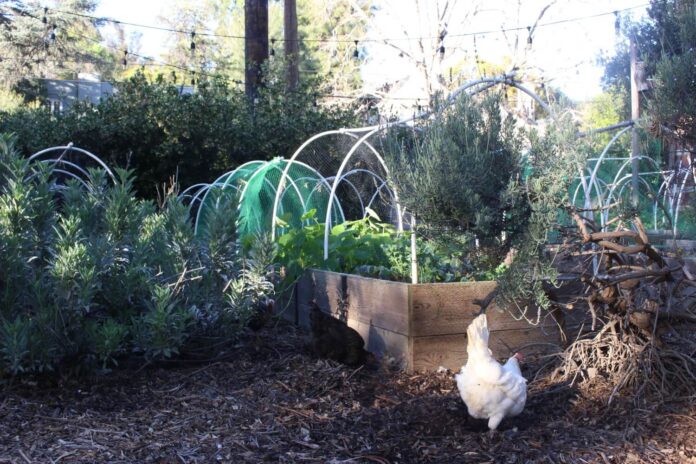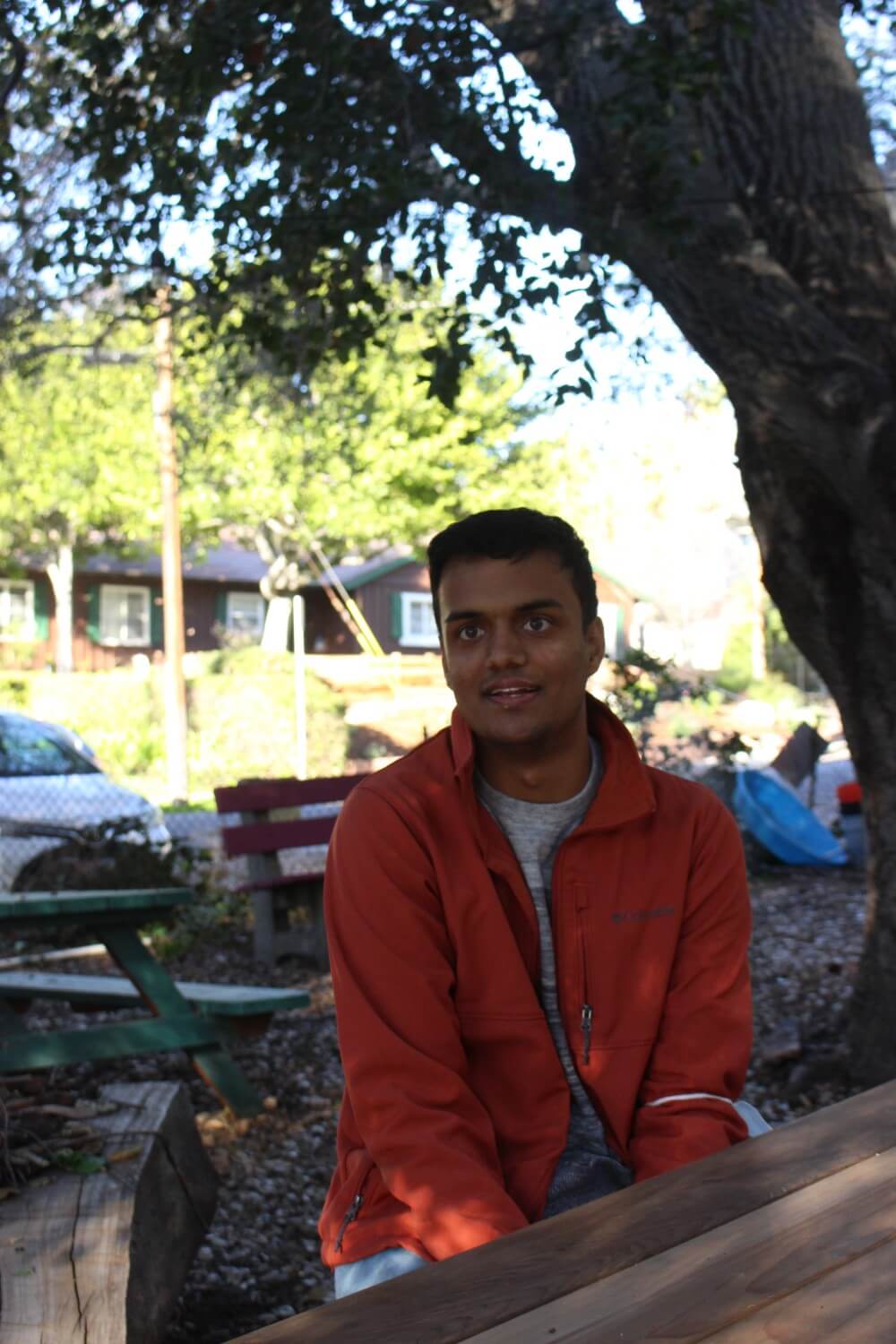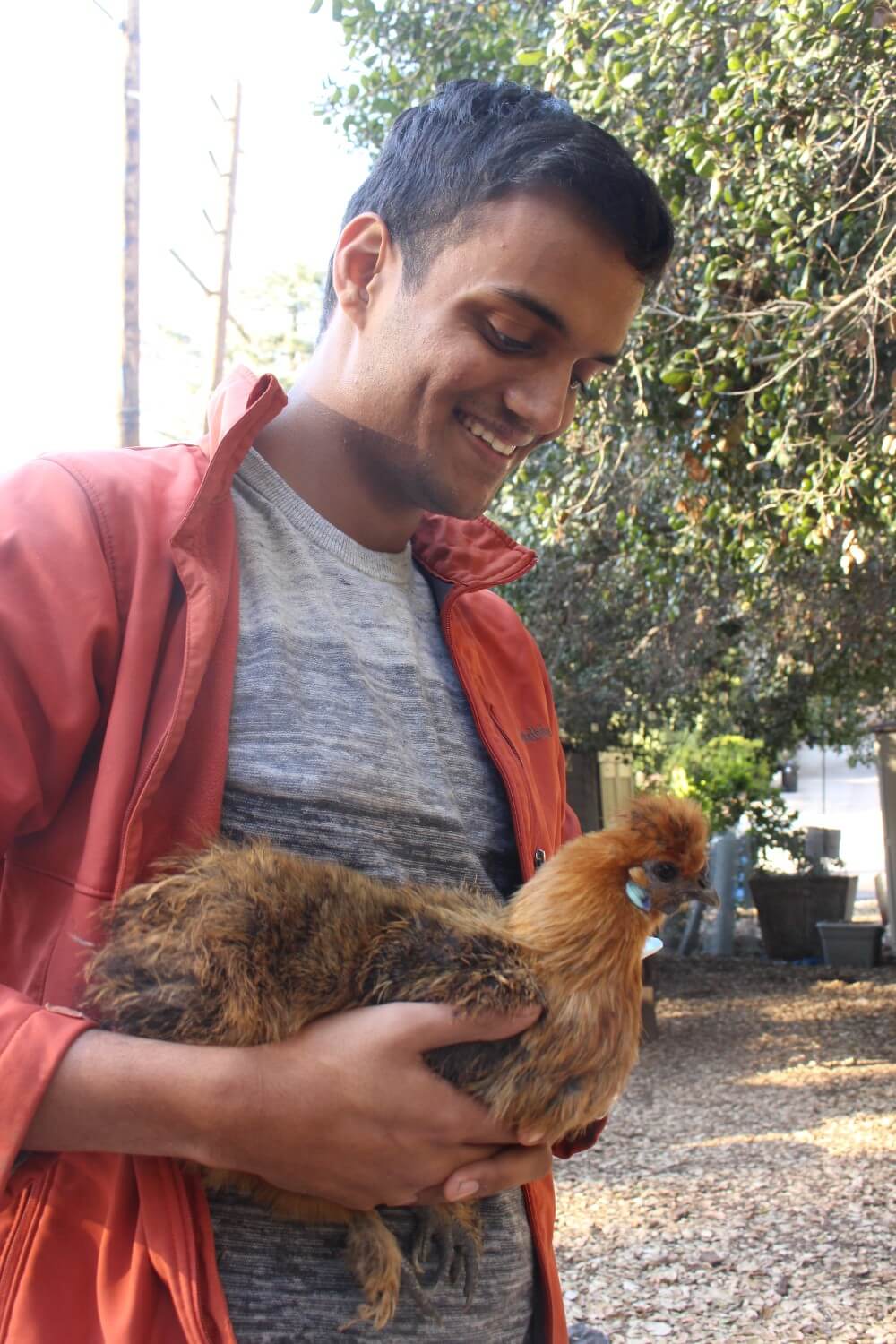
Trails leading up the hillside of Mount Fiji on Occidental College’s campus provide visitors with sweeping views of Northeast Los Angeles, the San Gabriel Mountains, and the famous rockface from which Eagle Rock gets its name. Since Fall 2018, Fiji has been undergoing a transformation from a beloved but unstewarded icon to a hotspot of biodiversity and student connection, according to Sannath Mathapathi (first year), a member of the Native Restoration Team. This group, part of the Food, Energy, and Sustainability Team (FEAST) on-campus garden, has been supporting the growth of native plants on Fiji and learning from the land in order to foster a sustainable ecosystem.

Sarah Carbonel (junior), co-manager of Bruce Steele Garden said FEAST had to overcome challenges within native restoration over the years.
“It is a difficult and labor-intensive job,” said Carbonel. “The section of Fiji Hill that FEAST works on looks in much better shape compared to past years, especially after the pandemic hit and FEAST was limited in the work we could do. After removing invasive grass this past weekend and seeing how much the once-baby native plants have grown, it’s clear that the Native Restoration Team has made great progress.”
Tabor Wanag (junior) has made restoring the native ecosystem on Fiji his personal goal since his first year on campus. Wanag said he has learned a lot about the interconnected botany and colonial history of the chaparral ecosystem that Fiji is part of, which he has shared with the rest of the team and used to the plan the restoration project.
“Pre-2018, Fiji was just there. What would happen was every year it would rain, and a bunch of weeds and annual grasses would come up and suck up all the water, making it hard for native plants,” Mathapathi said. “But what Tabor has done since 2018 is put plants up there, and put them in chicken wire to protect them. We’ve basically just made a little native ecosystem up there.”
Wanag said the native plants that grow in the region are accustomed to the Mediterranean climate of LA and store water during rainy winters to use slowly and efficiently in the hot summers. Invasive plants, which have a shorter growing season, use up water and then dry up more quickly than native plants, according to Wanag. He said the dry invasive plants can go on to fuel wildfires.
“After these wildfires, the soil undergoes a chemical transformation and becomes more hydrophobic,” Wanag said. “This means the invasive plants are making the land more hospitable to themselves and less hospitable to the native plants.”
According to Wanag, the LA ecosystem was drastically altered by the presence of Spanish colonists in the 1700s, who committed genocide against Indigenous people living in the region. They established farms and introduced cattle to grazing on the steep hillsides that surround LA.
Wanag said that in an effort to heal the historical wound on the landscape left by Spanish colonists cutting down live oak trees for timber, he has planted live oaks that are protected under California law, which he hopes will ensure the continuation of native restoration after he has left Occidental.
The Native Restoration Team aims to help the local ecosystem recover by replacing harmful plants with those that benefit the ecosystem, Mathapathi said. Some plants, such as laurel sumac, help plants to access water when there is little available.
“Laurel sumac’s taproot goes all the way down into the ground water supply and pulls water up. And it’s not just doing it for itself either. That laurel sumac, what it does is bring water up and then there are plants like mountain mahogany that have roots that go wide and flat,” Mathapathi said. “You plant mountain mahogany next to laurel sumac, and the laurel sumac will bring water up when there’s not enough water for other plants, and the mountain mahogany will spread it out. So you have a whole plumbing system.”
Creating networks of plants that benefit not only themselves, but other plants, animals and fungi within the ecosystem is one part of the Native Restoration Team’s vision for the future, Wanag said. Another equally important component is engaging with the community of students and residents who live within the ecosystem and encouraging them to learn about and engage with the environment around them.

Gabriel Morton (junior), a member of the team, said the purpose of the Native Restoration Team is not only to increase the biodiversity of the local ecosystem, but also to create a space where students can learn about the ecology of the land they are on and enjoy the natural beauty around them.
“We are making Fiji, which is seen by many students as an on-campus getaway, even more beautiful by planting these native plants and wildflowers,” Morton said. “We are doing that in a sustainable way, and we are doing it in a very dynamic way in order to meet the needs of the land as it is today.”
Gabriel Morton works as a staff writer for The Occidental.
![]()


































